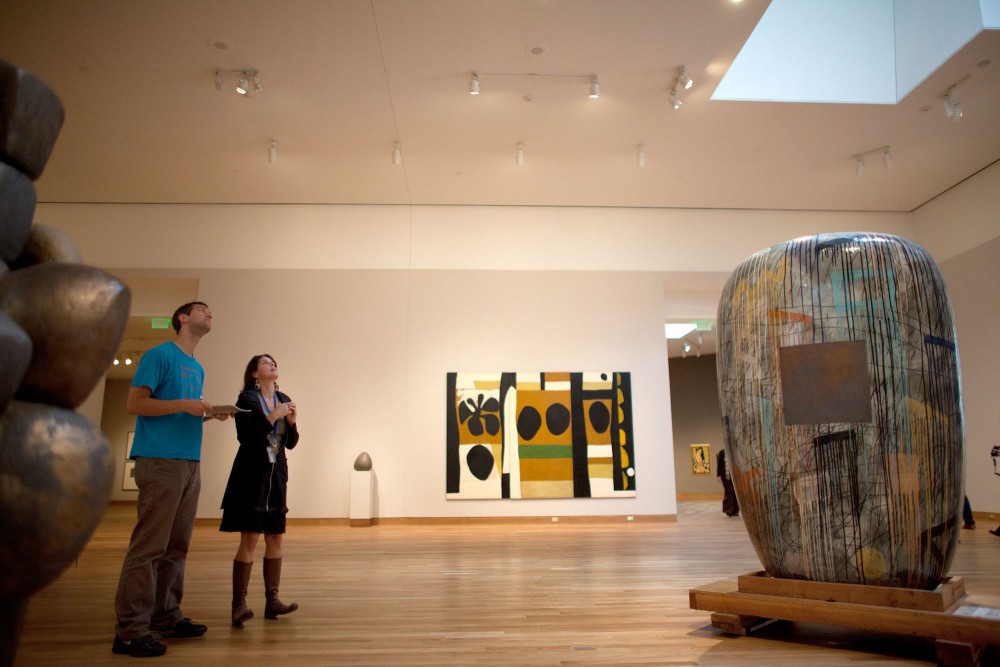From the outside, the 8,100 square-foot expansion âÄî marked by new rectangular brick structures and more curved stainless steel at its entrance âÄî was an addition to the Weisman Art Museum.
To those who designed it and work inside, the museum is finally complete, 18 years after it originally opened in 1993.
After a year of being closed, the museum will open its doors again Oct. 2, boasting new gallery space including the Edith Carlson Gallery and Target Studio for Creative Collaboration.
WeismanâÄôs architect, Frank Gehry, and other faculty members like chief curator Lyndel King were forces behind the renovation, as they were back when it first opened.
âÄúThis completes the vision that the architects had back in the early 1990s,âÄù said museum registrar Karen Duncan.
With the word âÄúfreeâÄù plastered across the front doors in capital letters, King said the museum is trying to get students more involved in the museum.
âÄúWe wanted to put this museum on campus to allow students the equal opportunity to learn to love art as they had to learn to love football,âÄù she said. âÄúWe wanted to put art right in the middle of their lives.âÄù
Among the 30-plus University of Minnesota students who work at the Weisman is new student guard Elizabeth Compton, who isnâÄôt an art major but âÄújust loves art.âÄù
âÄúI think itâÄôs great how they opened up the museum to show more of the pieces we have,âÄù Compton said of the expansion.
Before the addition, the Weisman generally displayed exhibits temporarily because it didnâÄôt have the space to showcase all of its art. Most pieces from the 20,000-strong collection were kept in storage, said Gwen Sutter, the associate administrator at the museum.
With the expansion, the museum is able to show more of its permanent collection to students.
âÄúThe temporary art exhibitions get people to come back,âÄù King said. âÄúBut the permanent collections allow students to engage art in a deeper way.âÄù
Weisman commissioned artists Sharon Louden and Eun-Kyung Suh to create elaborate pieces for the reopening.
LoudenâÄôs piece canâÄôt be contained to just one room.
To the left of the entrance is one of the recently repainted grand white walls, which is now covered in hundreds of thousands of aluminum strips that climb to the top of the wall and spill over into the next room. They splash across newly furnished hardwood floors in a frenzy of bent light and metal.
Over the summer, Louden created the piece with the help of 10 University students, who individually hand-bent each of the 250,000 pieces of aluminum.
John Cook, the executive architect of the addition from the HGA firm, was part of the original creation of the Weisman. He said it was difficult to coordinate the museumâÄôs renovation alongside the construction on both the Science Teaching and Student Services building and the Central Corridor light rail. Cook said the addition cost $14 million altogether.
With that money, the architects were able to contribute to what King called âÄúa unique museum where the building is part of the collection.âÄù


